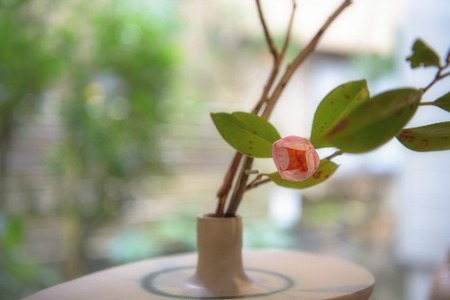
If you’ve heard the term wabi-sabi, you probably aren’t sure what it is unless you’re interested in home design.
For those who don’t know, wabi-sabi is not a type of Japanese food even though it sounds remarkably similar to wasabi. It’s actually a Japanese term and a type of Japanese home design, which has become trendy in recent years – but what defines it from other design trends?
What is Wabi-Sabi?
Basically, “wabi-sabi” is a Japanese term that means finding beauty in imperfection, which has become inspiration for a type of interior design.
In English, “wabi” roughly translates to “rustic simplicity” or “understand elegance,” which is understood as being one with nature. “Sabi” translates to “taking pleasure in the imperfect,” which can be understood as accepting life as it is – imperfections and all.
When put together, it becomes a Japanese philosophy that has been around for centuries that means seeking out authenticity and finding the joy in the way things are, rather than the way they could be. Only recently has wabi-sabi developed into an interior design style.
What does Wabi-Sabi look like?
Wabi-sabi is a design that embraces authenticity. It encourages peace and simplicity in your home by finding value in items and furniture that looks weathered and lived-in, rather than brand new items.
Of course, it can be hard to describe such a vast yet simple home design style in a few words. Wabi-sabi is such an abstract idea, that it would look different to everyone who used it to design their home. Try following these tips to create a unique, yet simple and imperfect home for yourself.
Tips to Create a Wabi-Sabi home
Get inspired by nature
What is more imperfectly perfect than nature?
Nature is woven into the philosophy of wabi-sabi because of its natural simplicity and imperfection. Using nature to design your home brings in that weathered look- such as raw textures and Earthy hues- which will give your home a sense of peace.
Don’t just use nature as inspiration, bring nature into your home as well. Use flowers and plants to decorate your home. Their imperfection will only remind you how beautiful and calming accepting imperfections can be.
Mix and match
An important principle of wabi-sabi is that you shouldn’t bring something into your home because it matches. For example, don’t settle for the blue dishware that you don’t actually like for the sole reason that it matches your dining room. This doesn’t mean you set out to purposely pair unlike things together.
Every time you bring something new into your house it should be a reflection of something you love. This means it’s okay to mix and match. Wabi-sabi is a style that gives you freedom of design.
Reuse and Re-purpose
Another key factor of wabi-sabi is incorporating reused and re-purposed items into your home.
Wabi-sabi is by no means a home design where every item in your home is brand new. It’s a design that embraces a sustainable approach, which means reused and re-purposed items are welcome in a wabi-sabi home. Work with distressed floorboards or a cracked vase to work them into something that will fit with your aesthetic.
This doesn’t mean you can’t have new items in your house – that’s part of the freedom of design that wabi-sabi gives you. However, if you are purchasing a new item, choose something that will last a long time – something sustainable.
Clear clutter
Wabi-sabi is a design that goes back to the basics – a home free of clutter that only brings in necessities.
It’s a minimalist approach that aims to keep necessities calm and happy, which will then maximize your joy. It’s not an approach meant to clear your house of everything. A traditional minimalist might get rid of a decorative piece that they like, because they see it as cluttering their house. While a wabi-sabi minimalist would keep the decorative piece, because they like it.
It’s not about clearing all clutter – it’s about clearing clutter that you don’t use or necessarily like. It’s meant to keep nostalgia, utility and beauty in your home by having less of things that you don’t like.
